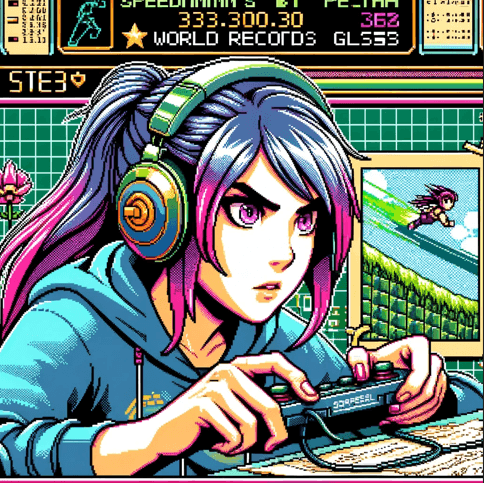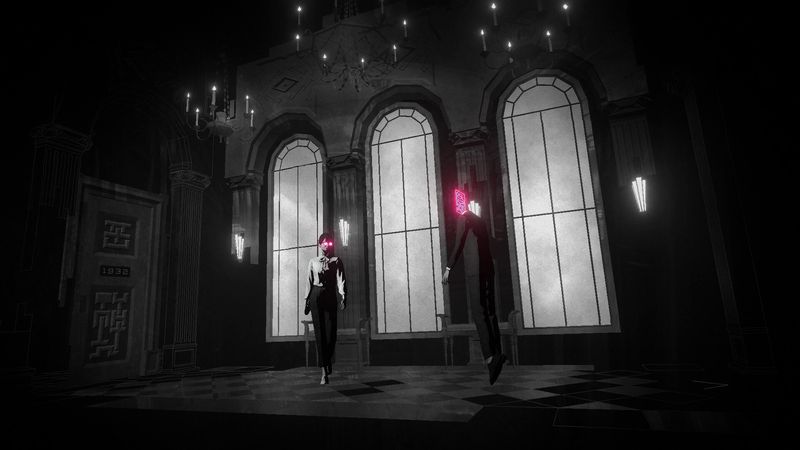 For today’s roundtable, let’s dive into Lorelei and the Laser Eyes, developed by Simogo and published by Annapurna Interactive. Each of us brings a unique perspective shaped by our gaming styles. Personally, I appreciated the meticulous detail this game demands, as highlighted by top Steam reviews. The intricately connected puzzles and rewards for thorough exploration make it a delight for players like me. However, the walking mechanic deserves attention. While it immerses you in the baroque-style world, a faster travel option would have improved the experience.
For today’s roundtable, let’s dive into Lorelei and the Laser Eyes, developed by Simogo and published by Annapurna Interactive. Each of us brings a unique perspective shaped by our gaming styles. Personally, I appreciated the meticulous detail this game demands, as highlighted by top Steam reviews. The intricately connected puzzles and rewards for thorough exploration make it a delight for players like me. However, the walking mechanic deserves attention. While it immerses you in the baroque-style world, a faster travel option would have improved the experience.
 The strong sense of discovery is indeed fascinating! Lorelei and the Laser Eyes presents intriguing gameplay mechanics influenced by interactions. You’re not just solving puzzles; you’re interacting with the environment to uncover secret paths and hidden codes. It’s pleasing when you find an unexpected way to unlock a door or when an old item suddenly becomes handy! The maze navigator was a bit frustrating, but that’s part of the charm—part frustration, part excitement. On the topic of items, managing an easily cluttered inventory was stressful sometimes, and I wish used items could be discarded automatically.
The strong sense of discovery is indeed fascinating! Lorelei and the Laser Eyes presents intriguing gameplay mechanics influenced by interactions. You’re not just solving puzzles; you’re interacting with the environment to uncover secret paths and hidden codes. It’s pleasing when you find an unexpected way to unlock a door or when an old item suddenly becomes handy! The maze navigator was a bit frustrating, but that’s part of the charm—part frustration, part excitement. On the topic of items, managing an easily cluttered inventory was stressful sometimes, and I wish used items could be discarded automatically.

 Moving on to the narrative aspect, this game undoubtedly shines. We’re not merely puzzle solvers but detectives unfolding an intricate, non-linear mystery. Even though the story is cryptic, the environmental storytelling through notes, books, and hints around the mansion create an engaging narrative. The mystery keeps you invested, piecing together a rich backstory that’s gradually revealed. A bit like ‘The Room’ series, isn’t it?
Moving on to the narrative aspect, this game undoubtedly shines. We’re not merely puzzle solvers but detectives unfolding an intricate, non-linear mystery. Even though the story is cryptic, the environmental storytelling through notes, books, and hints around the mansion create an engaging narrative. The mystery keeps you invested, piecing together a rich backstory that’s gradually revealed. A bit like ‘The Room’ series, isn’t it?
 Yes, but with a drastically different visual impartation. High-quality animations, attention to detail, and a specific artistic style make Lorelei and the Laser Eyes distinct. The visuals subtly hint at the game’s eerie, mysterious undertones and contribute significantly to the overall immersion. This game would have been a different experience had its aesthetic not been so well developed. In comparison, the visuals gave me goosebumps similar to the chilling art of ‘Layers of Fear.’
Yes, but with a drastically different visual impartation. High-quality animations, attention to detail, and a specific artistic style make Lorelei and the Laser Eyes distinct. The visuals subtly hint at the game’s eerie, mysterious undertones and contribute significantly to the overall immersion. This game would have been a different experience had its aesthetic not been so well developed. In comparison, the visuals gave me goosebumps similar to the chilling art of ‘Layers of Fear.’

 I obey the audio design is captivating, too. The ethereal soundtrack keeps the tension and mystery going while subtly hinting at developments in the plot. Although there’s no voice acting, the sound effects are on point, adding depth to the player’s actions in the game. I found the audio cues quite useful to alert me of interactive elements in the environment.
I obey the audio design is captivating, too. The ethereal soundtrack keeps the tension and mystery going while subtly hinting at developments in the plot. Although there’s no voice acting, the sound effects are on point, adding depth to the player’s actions in the game. I found the audio cues quite useful to alert me of interactive elements in the environment.
 In terms of character development, our protagonist, Lorelei, is a rather abstract figure, with her personality mainly revealed through actions. We unravel her past and purpose as we decipher the mansion’s puzzles. However, since the game focuses heavily on mysteries and puzzles, character interactions are comparatively sparse.
In terms of character development, our protagonist, Lorelei, is a rather abstract figure, with her personality mainly revealed through actions. We unravel her past and purpose as we decipher the mansion’s puzzles. However, since the game focuses heavily on mysteries and puzzles, character interactions are comparatively sparse.

 Agreed. Now, speaking of puzzles, their level of difficulty is a topic of debate. While the first reviewer found the puzzles easy once clues were gathered, I found the last few puzzles quite challenging. The essence of difficulty lies more in finding the solution triggers rather than executing them. It’s the breadth and depth of the challenge that’s appealing here rather than the height of it.
Agreed. Now, speaking of puzzles, their level of difficulty is a topic of debate. While the first reviewer found the puzzles easy once clues were gathered, I found the last few puzzles quite challenging. The essence of difficulty lies more in finding the solution triggers rather than executing them. It’s the breadth and depth of the challenge that’s appealing here rather than the height of it.
 As for replay value, the non-linear narrative and diverse puzzles warrant a revisit. However, the potential treasures that lie hidden behind the game’s complex secrets are the real appeal for replaying. There’s always that lingering suspicion that you might have missed something, a passage unexplored, or a secret untold, offering significant replayability!
As for replay value, the non-linear narrative and diverse puzzles warrant a revisit. However, the potential treasures that lie hidden behind the game’s complex secrets are the real appeal for replaying. There’s always that lingering suspicion that you might have missed something, a passage unexplored, or a secret untold, offering significant replayability!

 Linking our thoughts, Lorelei and the Laser Eyes heads the list of games that offer a surreal, engaging, and vividly puzzling experience. If gamers enjoyed ‘The Room’ series for their mind-boggling mysteries or ‘Resident Evil’ for the residence-oriented exploration, and ‘Layers of Fear’ for the chilling atmosphere, they’ll undoubtedly find this game appealing. Our roundtable advises this one’s definitely worth time and gameplay.
Linking our thoughts, Lorelei and the Laser Eyes heads the list of games that offer a surreal, engaging, and vividly puzzling experience. If gamers enjoyed ‘The Room’ series for their mind-boggling mysteries or ‘Resident Evil’ for the residence-oriented exploration, and ‘Layers of Fear’ for the chilling atmosphere, they’ll undoubtedly find this game appealing. Our roundtable advises this one’s definitely worth time and gameplay.

